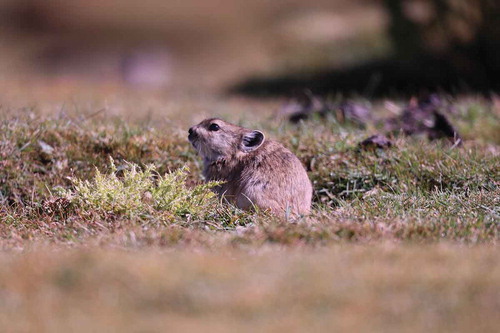ABSTRACT
The plateau pika (Ochotona curzoniae) has been engaged in pest control for many years based on the logic that the plateau pika is responsible for alpine grassland degradation and competes with livestock for forage resources. However, the plateau pika is an important species which has multiple benefits in Qinghai-Tibetan Plateau, as it (i) makes burrows that are the primary homes for lizards and a variety of small birds; (ii) creates microhabitat disturbance that promotes the increase of plant species richness; (iii) serves as the principal prey for almost all of the plateau predator species; and (iv) contributes positively to the dynamic equilibrium of alpine ecosystems.
1. The plateau pika is an important indicator of ecosystem health and serves to maintain the plant biodiversity in Tibetan alpine grasslands.
Its burrows provide necessary breeding habitats for local unique species like birds (e.g. Montifringilla adamsi, M. henrici, M. taczanowskii, M, blanfordi, M. davidiana, M. ruficollis, and Pseudopodoces humilis). (Lai and Smith, Citation2003; Smith and Foggin, Citation1999).
Photo 1.1. Plateau pikas (Ochotona curzoniae) helps to maintain plant species diversity in Tibetan alpine grassland. Photo by Yushan Wang.
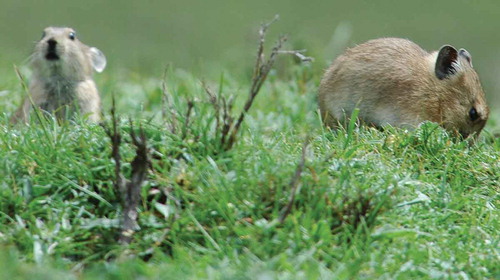
Photo 1.2. The plateau endemic birds (Montifringilla ruficollis Blanford) reuse the pikas’ burrows. Photo by Zhinong Xi.
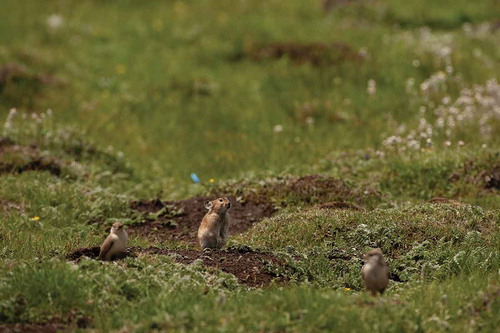
2. The plateau pikas are important food sources for a variety of predators.
Like a brown bear (Ursus arctos pruinosus), Tibetan fox (Vulpes ferrilata), steppe polecat (Mustela eversmanni), mountain weasel (Mustela sibirica), saker falcon (Falco cherrug), eurasian sparrow hawk (Accipiter nisus melaschistos), upland buzzard (Buteo hemilasius) and little owl (Athene noctua) et al. (Badingqiuying et al., Citation2016).
Photo 2.1. A Tibetan Fox (Vulpes ferrilata) is preying on a plateau pika in Hoh Xil National Nature Reserve of Sanjiangyuan National Park. Photo by Hong Sun.
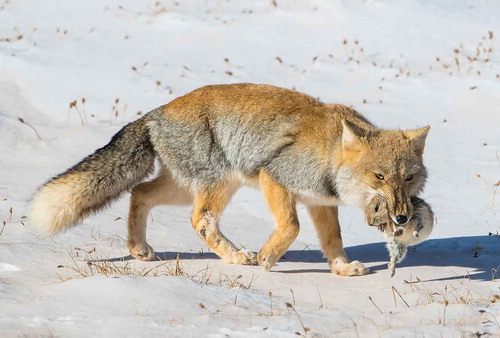
Photo 2.2. A golden eagle (Aquila chrysaetos) is preying on a plateau pika in Qumalai of the Yangtze River Source Park. Photo by Dazhao Song.
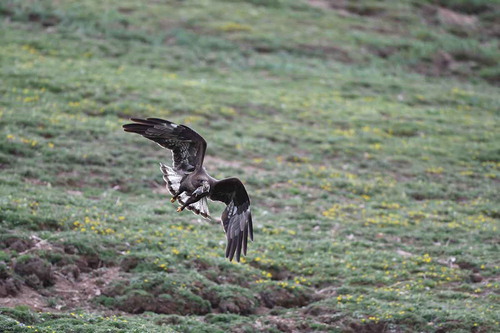
Photo 2.3. A Saker falclcon (Falco cherrug) is preying a plateau pika (2.3 A) and upland buzzard (Buteo hemilasius) feeding her babies (2.3 B). Photos by Zhinong Xi and Xinquan Zhao.
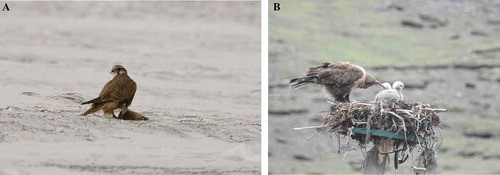
Photo 2.4. A black-necked crane (Grus nigricollis) is preying on a plateau pika. Photo by Zhinong Xi.
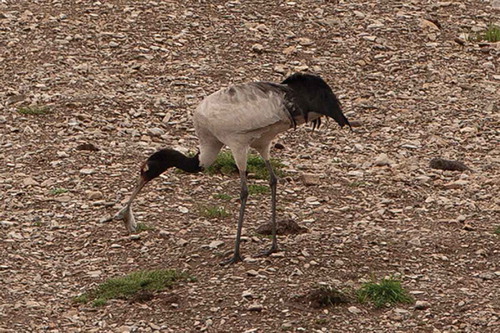
3. The plateau pika and domestic livestock share different niches and different food resource spectrum.
For instance, pikas often eat some plant species (i.e. Oxytropis kansuensis; Potentilla bifurca Linn.) that are poisonous for grazing livestock, while in contrast, pikas avoid sedges which are favorite fodder for livestock.
4. Active pika colonies provide a critical ecosystem service by increasing the infiltration rate of water.
Pika’s burrow helps reducing the potential of erosion following summer heavy raining. Thus, the pika appears to be both an ecosystem engineer and a keystone species in the alpine meadow ecosystem (Wilson and Smith, Citation2015; Smith et al., Citation2019).
Photo 4.1. Pika’s burrow helps reduce the potential of surface runoff following heavy rainfall. Photo by Zhinong Xi.
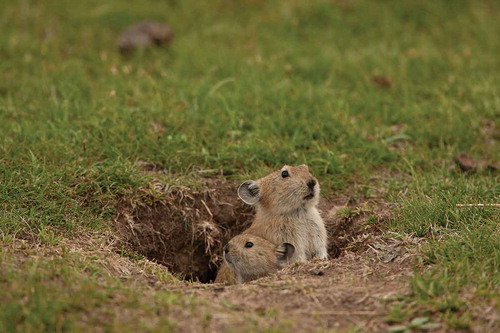
Conclusions: Biodiversity is essential for the function, health, and stability of alpine ecosystems. The pika is an important indicator of ecosystem health and serves to maintain grassland biodiversity on the Qinghai-Tibetan Plateau. They are important food sources for predators (Lai and Smith, Citation2003; Smith et al., Citation2019), indicator of ecological health, eat some plant species that are poisonous for livestock, reducing the potential for surface runoff following heavy rainfall (Wilson and Smith, Citation2015). In addition, the plateau pika appears to be both an ecosystem engineer (Smith et al., Citation2019) and a keystone species (Lai and Smith, Citation2003) in Qinghai-Tibetan alpine ecosystem. Thus, the plateau pika multiply benefits for alpine grassland ecosystem in Qinghai-Tibetan Plateau, we suggest that the plateau pika should be removed as a harmful rodents and stop eliminating them.
References
- Badingqiuying, A. T. Smith, J. Senko, and M. U. Siladan. 2016. “Plateau pika ochotona curzoniae poisoning campaign reduces carnivore abundance in southern Qinghai, china.” Mammal Study 41 (1): 1–4.
- Lai, C. H. and A. T. Smith. 2003. “Keystone status of plateau pikas (ochotona curzoniae): effect of control on biodiversity of native birds.” Biodiversity & Conservation 12 (9): 1901–1902.
- Smith, A.T, and J. M. Foggin. 1999. “The plateau pika (Ochotona curzoniae) is a keystone species for biodiversity on the Tibetan plateau.” Animal Conservation 2, 235–240.
- Smith, A. T., Badingqiuying, M. C. Wilson, and B. W. Hogan. 2019. “Functional-trait ecology of the plateau pika ochotona curzoniae in the Qinghai-Tibetan plateau ecosystem.” Integrative Zoology 14: 87–103.
- Wilson M. C., and A. T Smith. 2015. “The pika and the watershed: The impact of small mammal poisoning on the ecohydrology of the Qinghai-Tibetan Plateau.” AMBIO 44: 16–22.

